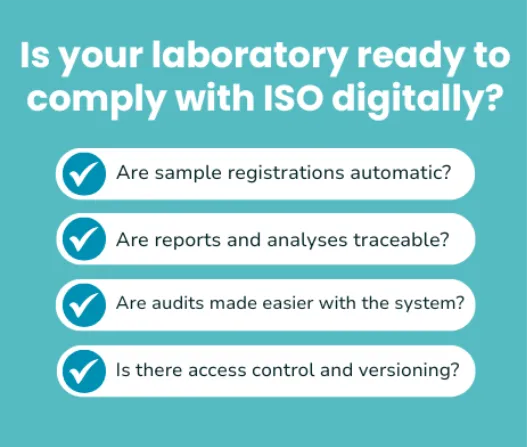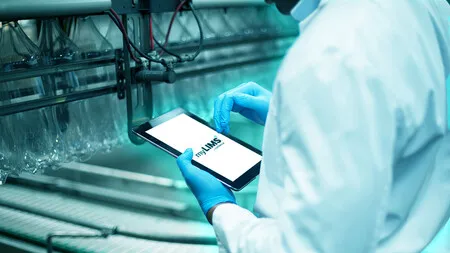August 15, 2025
ISO Compliance in Digital Labs: How to Ensure Quality and Traceability
Table of Content

Compliance with ISO standards is an essential requirement for laboratories that want to ensure quality, technical competence, and process safety. In an increasingly digital landscape, adopting appropriate technologies can be the key to not only meeting requirements but also optimizing operations and reducing errors. In this article, we explore how digital laboratories can ensure compliance with ISO standards, specifically ISO 17025 and ISO 9001.
1. What are the most relevant ISO standards for laboratories?
ISO 17025: Specifies the general requirements for the competence of testing and calibration laboratories. It is the primary standard for laboratories seeking formal recognition.
ISO 9001: Deals with the quality management system with a focus on continuous improvement and customer satisfaction.
Other sectoral standards: Such as FDA 21 CFR Part 11, NELAP/TNI, EPA, or FDA regulations that complement compliance.
Learn More: Compliance Made Simple: Harness the Full Potential of LIMS Automation in Your Lab
2. Why does digitalization facilitate compliance?
Digitization eliminates manual processes, reducing transcription errors, and increasing traceability. Systems like LIMS (Laboratory Information Management Systems) automate everything from data collection to reporting, ensuring compliance with regulatory standards.
Direct benefits of digitization for compliance:
- Automates data recording and eliminates paper.
- Ensures integration between stages and teams.
- Reduces human error.
- Speeds up audits and facilitates traceability.
3. Essential Technologies for Compliant Digital Labs
- LIMS Software (e.g., myLIMS): Central system that manages the complete sample cycle.
- Integrated Collection Devices: Tablets, sensors and automatic analyzers.
- Digital Workflows: For version control, approvals and traceability.
- Automatic Reporting: With standardized structure.
4. Direct Benefits of Digital Compliance
- Speed in delivering results.
- Security and real-time traceability.
- Reliability for internal and external audits.
- Improvement in quality management.
5. Checklist: Is your laboratory ready to comply with ISO digitally?

Meeting ISO standards in digital laboratories is more than a legal or market requirement. It's a competitive advantage that generates efficiency, safety, and continuous improvement. With the correct use of technologies like LIMS, your company can transform the challenge of compliance into a lever for quality and innovation.
Learn More: The Role of LIMS in Driving Digital Transformation
Best-in-class LIMS
Built for your success
See what makes Confience different. Speak with a member of our team.
Schedule a Demo







